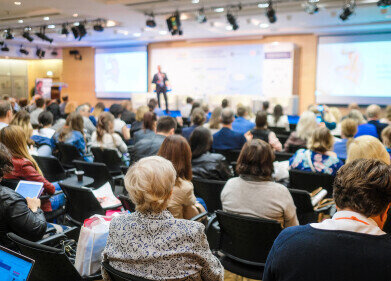Fuel for Thought
New hybrid catalyst technology offers a huge boost to achieving global net zero emission targets
Aug 03 2021
ViridiCO2 is a new hybrid catalyst technology that can reliably and sustainably convert CO2 into useful plastic material has been launched recently. This new concept is supported by the University of Southampton’s on-campus Future World, which was set-up to aid and finance new entrepreneurial ideas from students and university staff. This new CO2 mitigation system reduces CO2 emissions while producing vast amounts of chemical products useful for a host of industries such as clothing, construction and even filling mattresses!
ViridiCO2, which won this year’s Royal Society of Chemistry Emerging Technologies Competition, was devised by Dr. Daniel Stewart, co-founder and CEO, and Professor of Materials Chemistry and Catalysis Robert Raja. The creators of ViridiCO2 foresee that their system will be capable of closing the carbon loop at petrochemical refineries and plants when installed in to their output stream. The UK government have targeted zero greenhouse emissions by 2050 and this development offers a huge boost to achieving that aspiration.
Dr Daniel Stewart stated, “Our ultimate goal is to play a pivotal role in achieving global net zero emission targets. Quite simply, we have come up with a process which allows chemical manufacturers to directly replace fossil fuels with carbon dioxide in the production of high value chemicals. Before starting my research, we identified three problems. The first is chemical manufacturing which is responsible for 6 per cent of greenhouse emissions –encompassing 1 billion tonnes of CO2 a year from direct industry emissions alone, and a further 1.8 billion tonnes from heat and electricity production – unimaginable numbers.
Secondly, chemicals are produced almost solely through fossil fuels but fossil fuels are dwindling so we need to reduce reliance on them. And thirdly, there are 30 million tonnes of polyurethanes produced every year but they are largely non-recyclable. They find use across many commercial sectors and the industry is set to grow $70 billion by the year 2022. In the presence of uniquely designed catalysts, up to 50 per cent of the polyol feedstock mass can be replaced with carbon dioxide.
“The need for a more sustainable way of living is huge; everyone recognises this but it’s not an easy thing to tackle. A lot of ideas fail because they’re not scalable but we believe our technology is scalable, efficient and economical. We will aim to target chemical manufacturers in the first instance, with the opportunity to impact the founding industries that work in cement, steel and iron as it’s these that produce a further 10 percent of global CO2 emissions.
The ViridiCO2 benefitted from research funding from the Engineering and Physical Sciences Research Council (EPSRC). Dr Stewart credits much of ViridiCO2’s success to the University of Southampton’s School of Chemistry and Future Worlds.
Digital Edition
PIN 25.1 Feb/March
March 2024
In This Edition Safety - The technology behind the ION Science Tiger XT - Safety with ammonia and LOHCs as hydrogen carriers Analytical Instrumentation - Discussion on new tribology te...
View all digital editions
Events
Apr 22 2024 Hannover, Germany
Apr 22 2024 Marrakech, Morroco
Apr 22 2024 Muscat, Oman
Apr 22 2024 Rotterdam, Netherlands
Apr 23 2024 Singapore


















